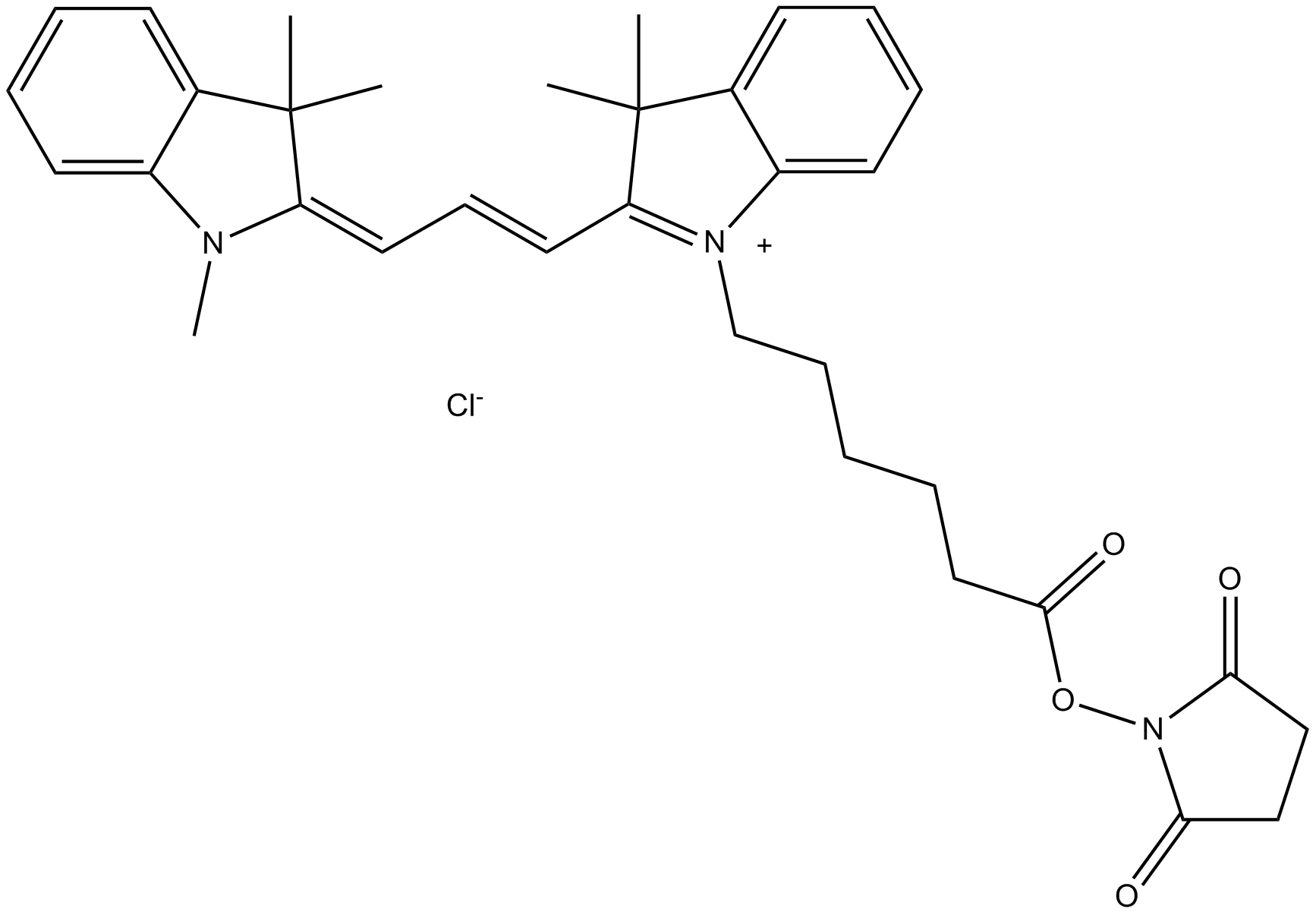Labeling & Detection
- Cyanine Dyes(228)
- Others(3)
- Affinity Probes(6)
- Dyes, Stains & Indicators(53)
- Enzyme Substrates(58)
- Fluorescence(215)
- Reactive Probes(28)
Produkte für Labeling & Detection
- Bestell-Nr. Artikelname Informationen
-
GC48974
Ac-VEID-AMC (ammonium acetate salt)
A caspase-6 fluorogenic substrate
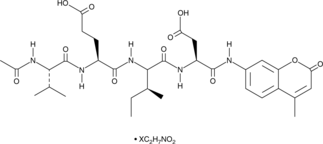
-
GC13326
Ac-YVAD-AFC
Ac-YVAD-AFC ist das fluorometrische Peptidsubstrat von Caspase-1 und Caspase-4 mit Λ Anregung von 400 nm und & Lambda; Emission von 505 nm.
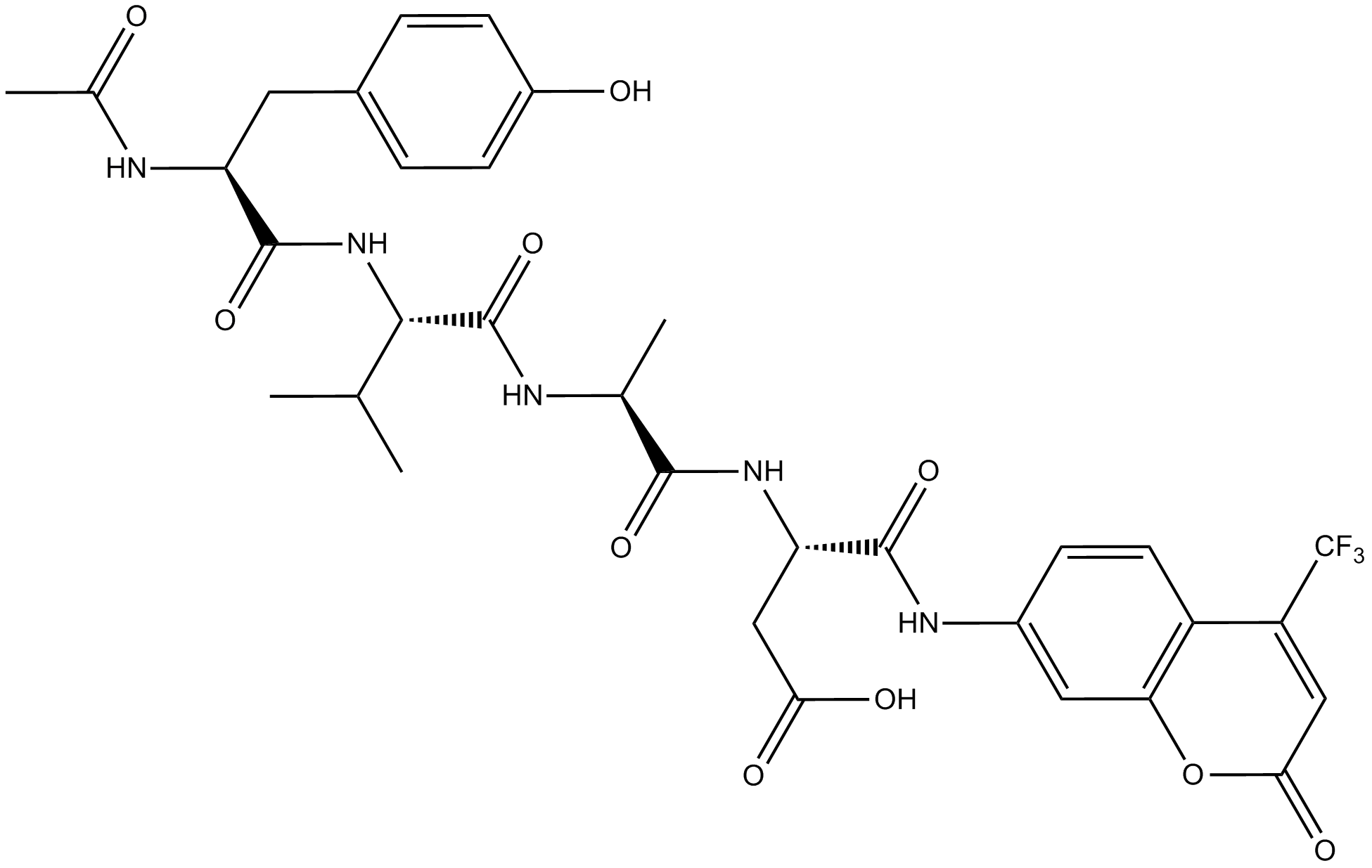
-
GC41242
Acridine Orange
Acridinorange ist ein zellgÄngiger Fluoreszenzfarbstoff, der Organismen (Bakterien, Parasiten, Viren etc.)
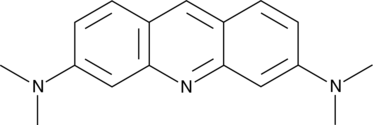
-
GC42765
Aldehyde Reactive Probe (trifluoroacetate salt)
Die DNA wird kontinuierlich durch endogene und Umweltfaktoren beschädigt, was zur Bildung von abasischen (apurinischen/apyrimidinischen, AP) Stellen führt, die die DNA-Synthese stören.
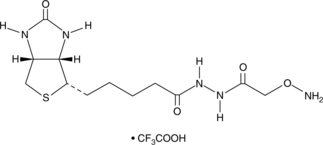
-
GC42781
AMC Arachidonoyl Amide
AMC arachidonoyl amide (AMC-AA) is one of several fatty acid amides which can be used to measure fatty acid amide hydrolase (FAAH) activity.
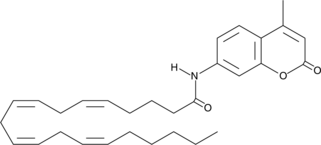
-
GC49331
AMCA N-succinimidyl ester
AMCA N-Succinimidylester ist ein BioReagenz, geeignet fÜr Fluoreszenz, kann fÜr Amin-reaktive Markierungen verwendet werden.

-
GC42825
APF
APF ist eine Fluoreszenzsonde, die selektiv und dosisabhÄngig bestimmte Spezies unter den ROS nachweisen kann, die hochgradig resistent gegen Autoxidation sind.
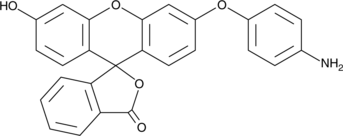
-
GC65458
Auramine O
Auramin O ist ein gelb fluoreszierender Farbstoff und kann zur FÄrbung sÄurefester Bakterien verwendet werden.
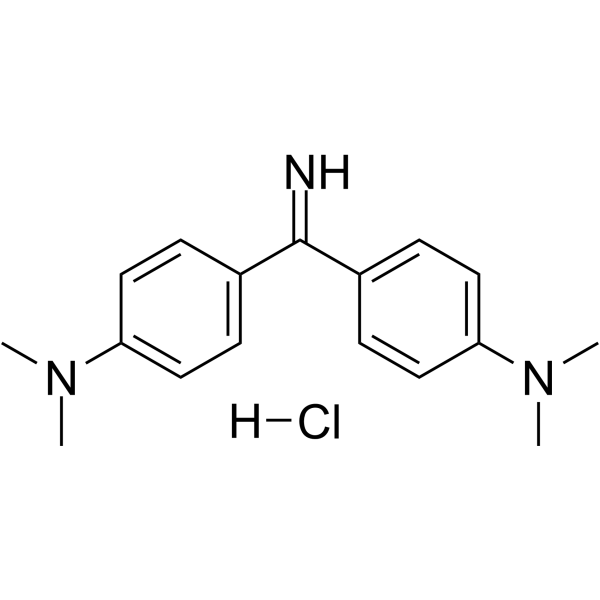
-
GC41583
BCN-E-BCN
BCN-E-BCN is a strained cycloalkyne probe for detecting proteins that have been sulfenylated, the first intermediate step in protein oxidation.

-
GC50173
BDY 650-X, SE
Red BDY (BODIPY® or boron-dipyrromethene) fluorescent dye for the labeling of amines; supplied as NHS ester
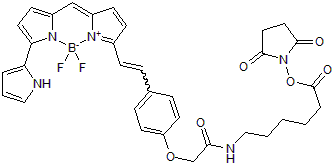
-
GC50170
BDY FL, SE
BDY FL, SE ist ein leuchtend grÜner Fluoreszenzfarbstoff.
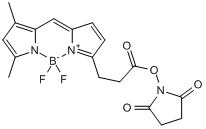
-
GC50171
BDY TMR-X, SE
BDY TMR-X, SE ist ein starker Fluoreszenzfarbstoff.
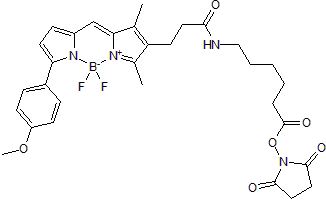
-
GC50172
BDY TR-X, SE
BDY TR-X, SE (BDY TR-X, SE NHS Ester) ist ein starker Fluoreszenzfarbstoff.
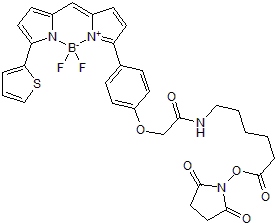
-
GC64664
Biotin-PEG4-dialkoxydiphenylsilane-picolyl azide
Biotin-PEG4-dialkoxydiphenylsilan-picolylazid ist ein klickbares, sÄurespaltbares Biotin-picolylazid.
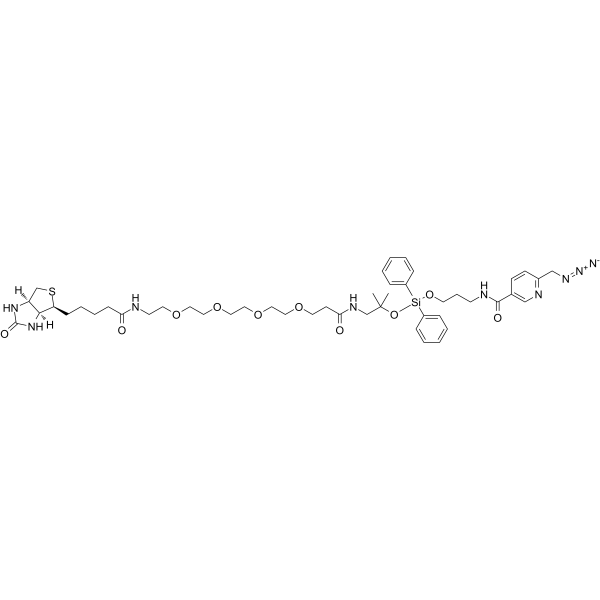
-
GC49717
Boc-LGR-pNA (acetate)
A chromogenic substrate for endotoxins
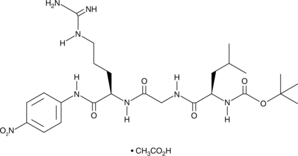
-
GC42958
Boc-LRR-AMC
Boc-LRR-AMC is a fluorogenic substrate for the trypsin-like activity of the 26S proteasome or 20S proteolytic core.
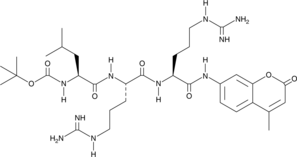
-
GC11641
Boc-Lys(Ac)-AMC
GPCR G2A/GPR132 agonist
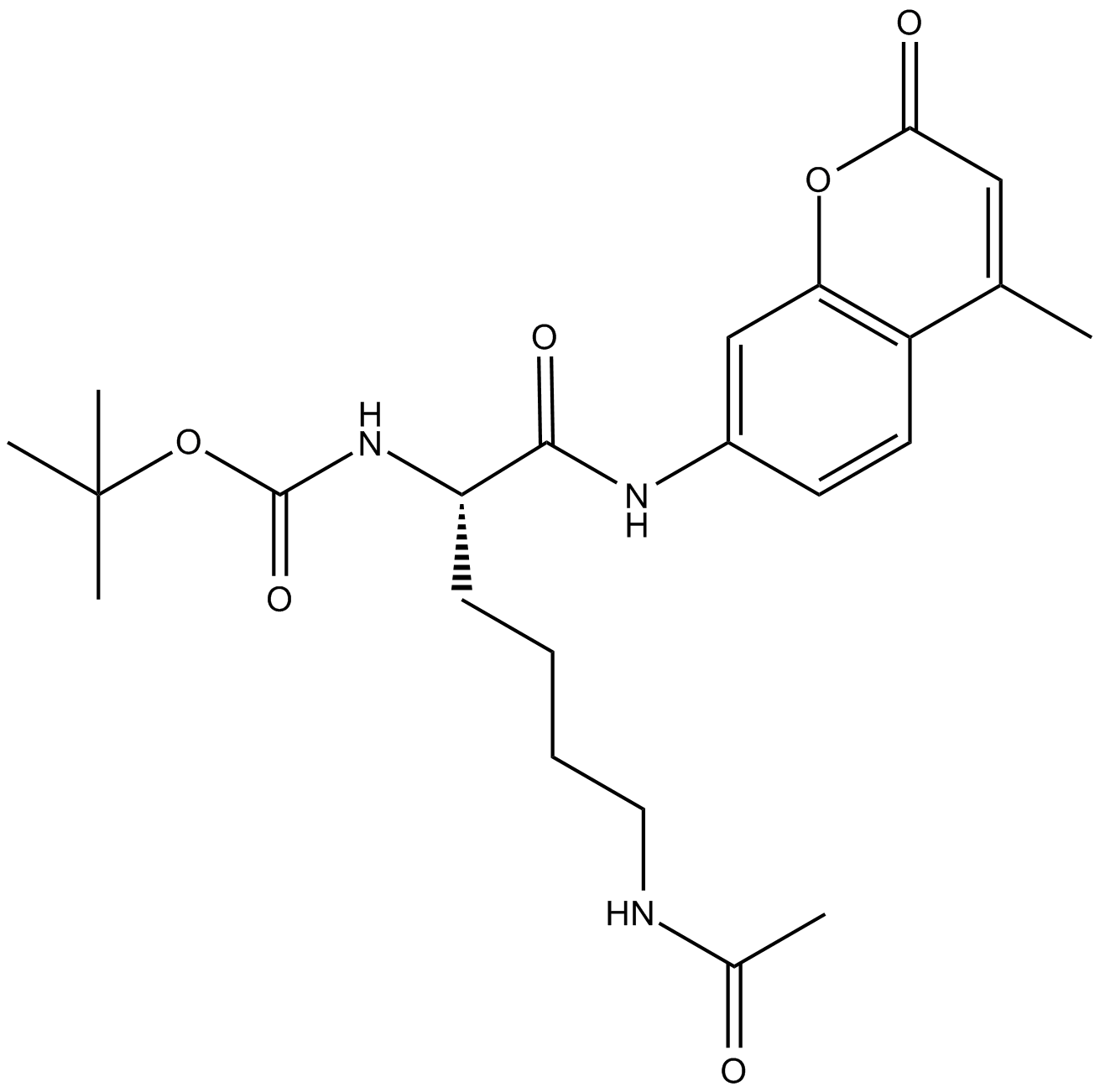
-
GC42959
BODIPY 493/503
BODIPY 493/503, ein lipophiles Fluoreszenzfarbstoff, der helles grünes Fluoreszenzlicht emittiert, wurde umfangreich zur Markierung von Lipidtropfen eingesetzt (Ex/Em: 493/503 nm).
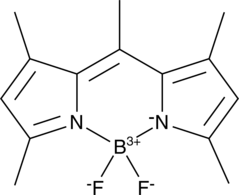
-
GC45796
BODIPY 503/512
BODIPY 503/512 ist ein starker Fluoreszenzfarbstoff.
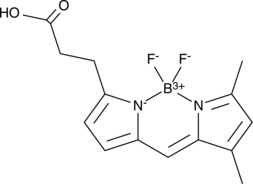
-
GC42960
BODIPY 505/515
BODIPY 505/515, ein lipophiles Fluoreszenzfarbstoff, der Fluoreszenz emittiert, wurde umfangreich zur Markierung von Lipidtropfen eingesetzt (Ex/Em: 505/515 nm).
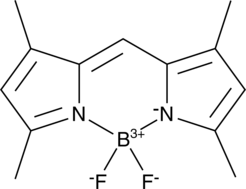
-
GC42961
BODIPY 558/568 C12
BODIPY 558/568 C12 is a fatty acid-conjugated fluorescent probe for lipid droplets.

-
GC62873
BODIPY 576/589
BODIPY 576/589 ist ein langwelliger biologisch markierter Farbstoff.
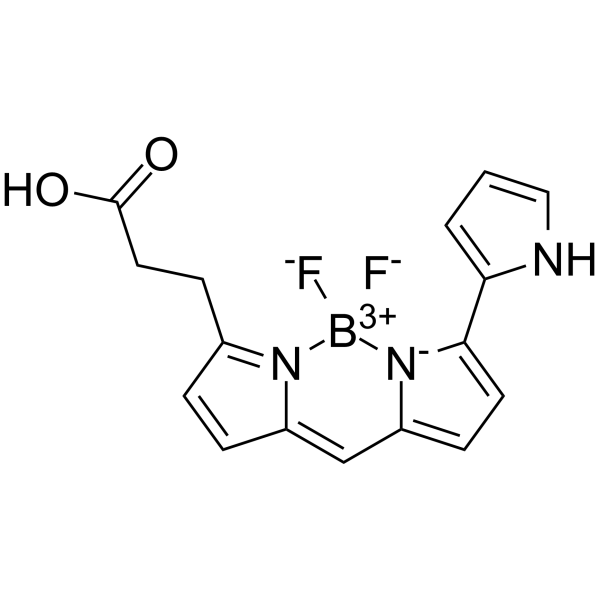
-
GC42962
BODIPY 630/650X succinimide ester
BODIPY 630/650X Succinimidester ist ein fluoreszierendes Konjugat des Adenosinrezeptorliganden N-Ethylcarboxamido-Adenosin (NECA).
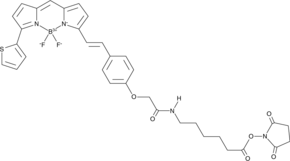
-
GC60092
BODIPY aminoacetaldehyde
BODIPY-Aminoacetaldehyd (BAAA) ist ein fluoreszierendes Substrat sowohl fÜr die murine als auch fÜr die humane Aldehyddehydrogenase (ALDH). BODIPY-Aminoacetaldehyd besteht aus einer Aminoacetaldehyd-Einheit, die an das BODIPY-Fluorochrom gebunden ist, und kann zur Markierung von Stammzellen verwendet werden.
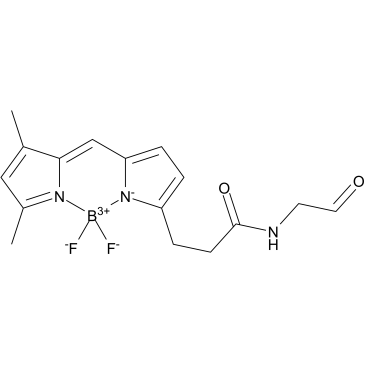
-
GC19605
BODIPY FL C16
a synthetic precursor for various fluorescent phospholipids
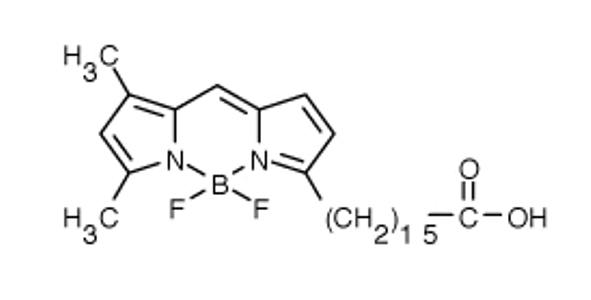
-
GC46939
BODIPY-aminoacetaldehyde diethyl acetal
A stable precursor to the fluorescent ALDH substrate BAAA
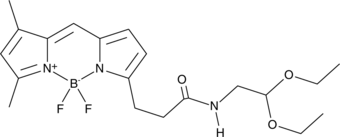
-
GC42963
BODIPY-C12 Ceramide (d18:1/12:0)
BODIPY-C12 Ceramide (B12Cer) is a fluorescently-tagged form of C12 ceramide that displays excitation/emission maxima of 505/540 nm, respectively.
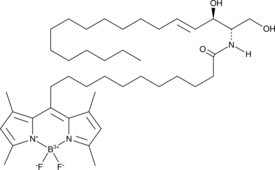
-
GC42964
BODIPY-Cholesterol
BODIPY-Cholesterol ist Cholesterin, das mit einem Bor-Dipyrromethen-Difluorid (BODIPY)-Fluorophor markiert ist und zur Überwachung der Sterolaufnahme und des interorganellaren Sterolflusses in Zellen verwendet wird. Es hat eine Anregung bei 480 nm und eine Emission bei 508 nm.
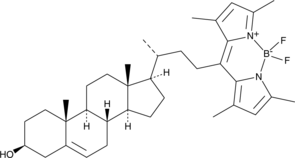
-
GC46940
BODIPY-Palmitate
Fluorescently tagged palmitic acid

-
GC61554
BODIPY-TS
BODIPY-TS (Thiol-Green 2) ist eine schnell ansprechende und thiolspezifische Turn-on-Sonde.
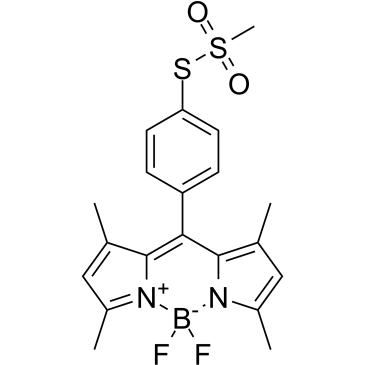
-
GC42984
BTC (potassium salt)
BTC (Kaliumsalz) ist ein Kalziumindikator mit niedriger AffinitÄt (Kd etwa 7-26 μ M) mit vielen wÜnschenswerten Eigenschaften fÜr die zellulÄre Kalziumbildgebung, einschließlich langer AnregungswellenlÄngen (400/485 nm), geringer Empfindlichkeit gegenÜber Mg2+ und Genauigkeit der ratiometrischen Messung Messung.
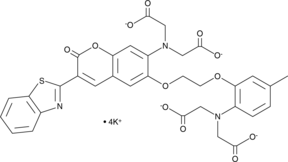
-
GC42985
BTC AM
BTC AM ist ein Calciumindikator mit niedriger Affinität.
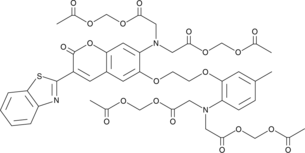
-
GC43002
Bz-FVR-AMC
Bz-FVR-AMC ist ein fluorogenes Substrat fÜr Procathepsin mit einem kcat/Km-Wert von 1070 mM-1s-1.
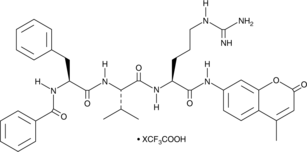
-
GC52488
Bz-FVR-AMC (trifluoroacetate salt)
A fluorogenic peptide substrate
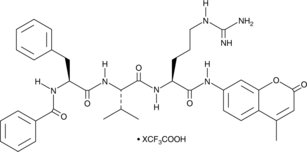
-
GC45394
Bz-IEGR-pNA (acetate)
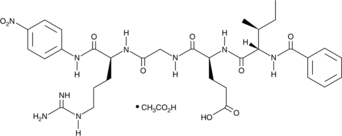
-
GA21221
Bz-Nle-Lys-Arg-Arg-AMC
Bz-Nle-Lys-Arg-Arg-AMC is a fluorogenic tetra-peptide substrate for yellow fever virus (YFV) non-structural 3 (NS3).

-
GC43003
C10 AV Ceramide (d18:1/10:0)
AV-Ceramide is a fluorescently-tagged probe consisting of C-10 ceramide with an anthrylvinyl (AV) group attached to the end of the acyl chain.
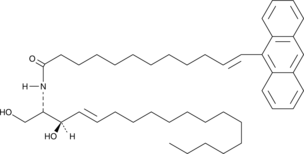
-
GC40165
C11 BODIPY 581/591
C11-BODIPY581/591 ist eine fluoreszierende Verhältnis-Sonde für die Lipidoxidation.
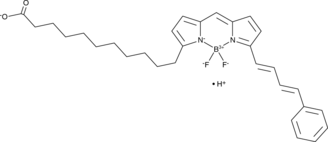
-
GC43009
C12 NBD 3'-sulfo Galactosylceramide (d18:1/12:0)
C12 NBD 3'-sulfo galactosylceramide is a sphingolipid that is tagged with a fluorescent C12 nitrobenzoxadiazole (C12 NBD) group.
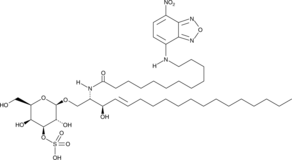
-
GC43010
C12 NBD Ceramide (d18:1/12:0)
C12 NBD Ceramid (d18:1/12:0) ist ein fluoreszierendes Analogon von Ceramid, es kann als Substrat in Ceramidase-Assays verwendet werden.
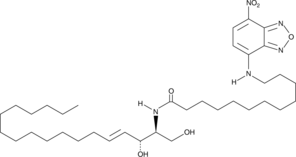
-
GC43011
C12 NBD dihydro Ceramide (d18:0/12:0)
C12 NBD dihydro Ceramide (d18:0/12:0) ist ein fluoreszierendes Ceramidase-Substrat.
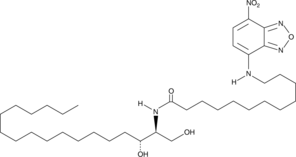
-
GC43012
C12 NBD Galactosylceramide (d18:1/6:0)
C12-NBD-Galactosylceramid, fluoreszierender Farbstoff, ist ein biologisch aktives Derivat von Galactosylceramid, das mit einer fluoreszierenden C12-Nitrobenzoxadiazol (C12-NBD)-Gruppe markiert ist.
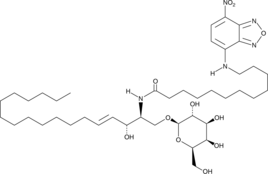
-
GC43013
C12 NBD Globotriaosylceramide (C18:1/12:0)
C12 NBD globotriaosylceramide is a biologically active derivative of globotriaosylceramide that is tagged with a fluorescent C12 nitrobenzoxadiazole (C12 NBD).
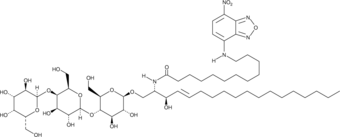
-
GC43016
C12 NBD L-threo dihydro Ceramide (d18:0/12:0)
C12 NBD L-threo dihydro Ceramide (d18:0/12:0) ist eine fluoreszierende Gruppe.

-
GC43014
C12 NBD Lactosylceramide (d18:1/12:0)
C12-NBD-Lactosylceramid (d18:1/12:0) ist ein Derivat von Lactosylceramid, das mit einer C12-NBD-Fluoreszenzgruppe markiert ist.
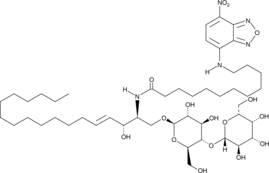
-
GC43017
C12 NBD Phytoceramide (t18:0/12:0)
C12 NBD phytoceramide is a biologically active derivative of phytosphingosine that is tagged with a fluorescent C12 nitrobenzoxadiazole (C12 NBD) group.
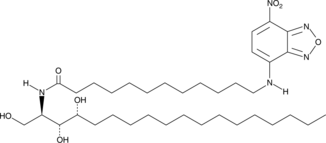
-
GC43018
C12 NBD Sphingomyelin (d18:1/12:0)
C12 NBD sphingomyelin is a biologically active derivative of sphingomyelin that is tagged with a fluorescent C12 nitrobenzoxadiazole (C12 NBD) group.

-
GC43021
C12FDG
C12FDG ist ein fluorogenes Substrat für β-Galactosidase.
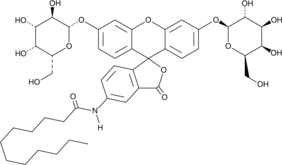
-
GC48330
C3 BODIPY Ganglioside GM1 (d18:1/3:0) (ammonium salt)
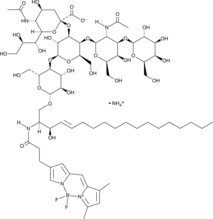
-
GC49013
C6 Biotin Ganglioside GD3 (d18:1/6:0) (ammonium salt)
An affinity probe for ganglioside GD3 binding partners
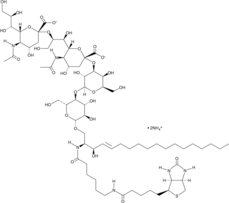
-
GC43096
C6 NBD Ceramide (d18:1/6:0)
C6 NBD Ceramide (d18:1/6:0) ist eine Golgi-Apparat-Fluoreszenzsonde mit ZellmembranpermeabilitÄt.
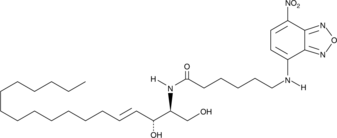
-
GC43097
C6 NBD dihydro Ceramide (d18:0/6:0)
C6 NBD Dihydroceramid (d18:0/6:0) ist ein Sphinganin-Analogon und kann als Fluoreszenzfarbstoff zur Markierung von FettsÄuren verwendet werden.
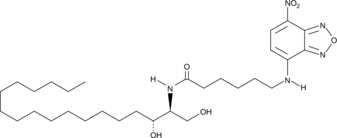
-
GC43098
C6 NBD Galactosylceramide (d18:1/6:0)
C6-NBD-Galactosylceramid ist ein aktives Derivat von Galactosylceramid, das mit fluoreszierendem C6-Nitrobenzoxadiazol (C6-NBD) markiert ist.
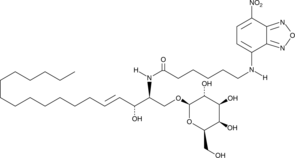
-
GC43099
C6 NBD Glucosylceramide (d18:1/6:0)
C6 NBD Glucosylceramid (d18:1/6:0) ist ein fluoreszierendes Glucosylceramid-Derivat (Ex = 466 nm, Em = 535 nm).
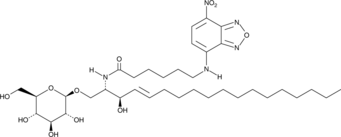
-
GC43101
C6 NBD L-threo Ceramide (d18:1/6:0)
C6 NBD L-threo Ceramide (d18:1/6:0) ist ein membrandurchlÄssiges Ceramid.
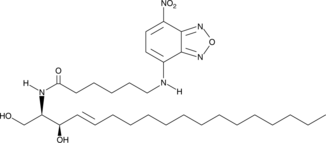
-
GC43100
C6 NBD Lactosylceramide (d18:1/6:0)
C6 NBD Lactosylceramid (d18:1/6:0) ist ein Derivat von Lactosylceramiden und kann im Lactosylceramid-Synthase-Assay als fluoreszierendes Akzeptorsubstrat verwendet werden. C6 NBD Lactosylceramide (d18:1/6:0) kann auch in der Krebsforschung eingesetzt werden.
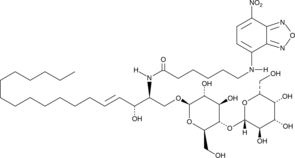
-
GC40774
C6 NBD Phytoceramide (t18:0/6:0)
C6 NBD phytoceramide is a biologically active derivative of C6 phytoceramide that is tagged with a fluorescent C6 nitrobenzoxadiazole group.
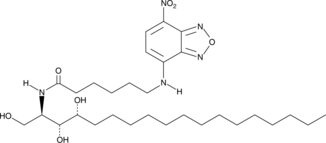
-
GC43103
C6 NBD Sphingomyelin (d18:1/6:0)
C6 NBD Sphingomyelin (d18:1/6:0) ist ein fluoreszierendes kurzkettiges Analogon von Sphingomyelin.
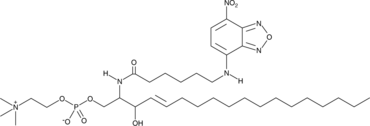
-
GC43115
Cal Green™ 1 (potassium salt)
Cal Green™ 1 is a cell-impermeant fluorescent calcium indicator that is characterized by high quantum yield and low phototoxicity.
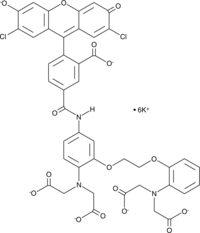
-
GC43116
Cal Green™ 1 AM
Cal Green™ 1 AM ist ein zellgÄngiger fluoreszierender Calciumindikator (Anregung 506 nm; Emission 531 nm).
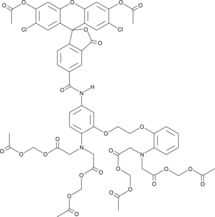
-
GC18604
Calcein Blue AM
Calcein Blue AM ist ein Zellfarbstoff.
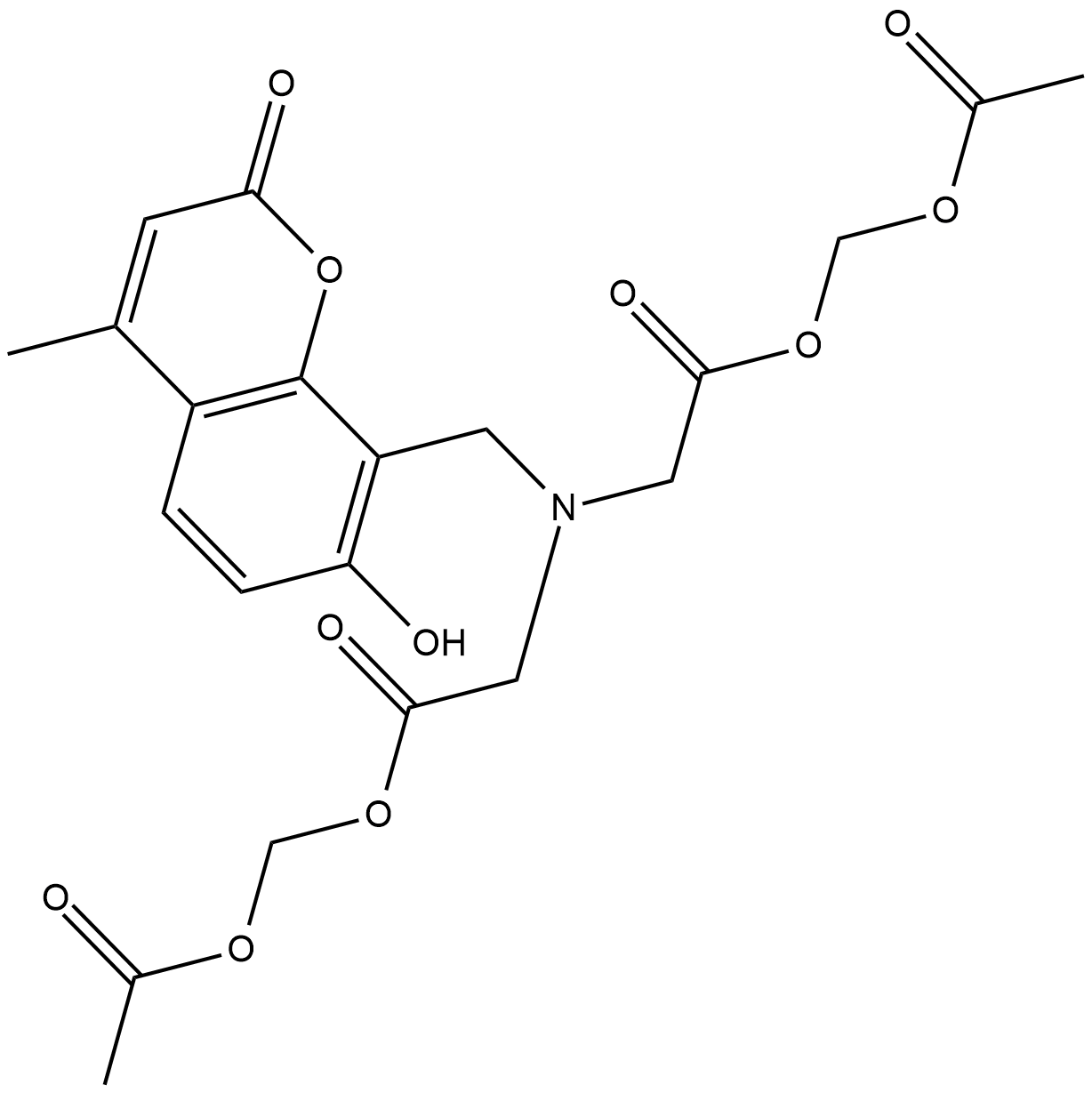
-
GC43118
Calcein Deep Red™
Calcein Deep Red? is a membrane-impermeant fluorescent dye.
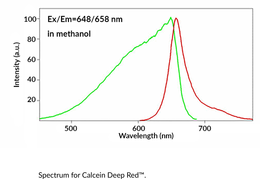
-
GC43120
Calcein Orange™ (sodium salt)
Calcein Orange is a membrane-impermeant fluorescent dye.
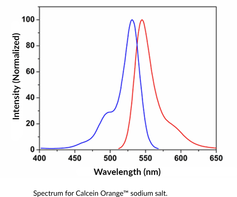
-
GC43121
Calcein Orange™ Diacetate
Calcein Orange Diacetate is a fluorogenic dye that is used to assess cell viability.
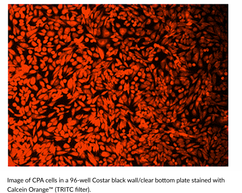
-
GC43122
Calcein Red™ (sodium salt)
Calcein Red? is a membrane-impermeant fluorescent dye.
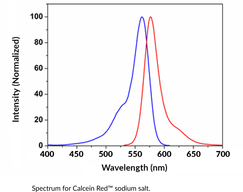
-
GC43123
Calcein Red™ AM
Calcein Red? AM is a fluorogenic dye that is used to assess cell viability.
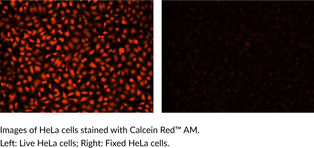
-
GC43124
Calcein UltraBlue™ (sodium salt)
Calcein UltraBlue? is a membrane-impermeant fluorescent dye.
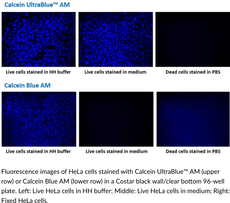
-
GC62882
Calcein(AR)
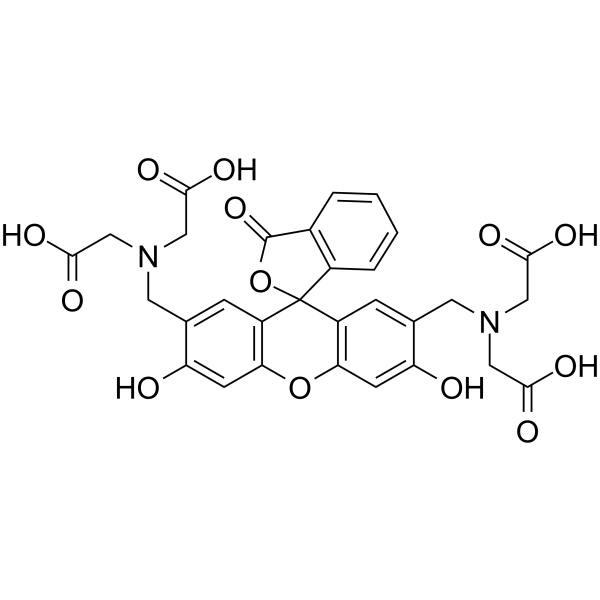
-
GC49332
Calcineurin Substrate (trifluoroacetate salt)
A synthetic peptide substrate

-
GC43157
CAY10455
CAY10455 is a labeled analog of arachidonoyl ethanolamide (anandamide; AEA) that is non-fluorescent when outside the cell.
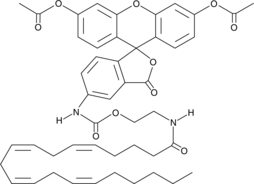
-
GC43204
CAY10730
CAY10730 is a turn-on fluorescent probe for the detection of nitroreductase activity, a marker of hypoxia.
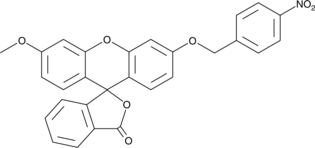
-
GC43205
CAY10731
CAY10731 (Verbindung 3) ist eine hochselektive Fluoreszenzsonde zum Nachweis von Schwefelwasserstoff (H2S).
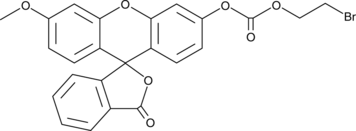
-
GC43206
CAY10732
CAY10732 fungiert als fluoreszierendes Mittel, das entwickelt wurde, um das Vorhandensein von Kohlenmonoxid zu identifizieren.
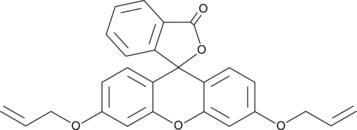
-
GC40030
CAY10733
CAY10733 is a fluorescent probe for the detection of carbon monoxide.
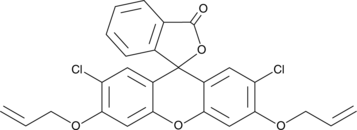
-
GC45405
CAY10737
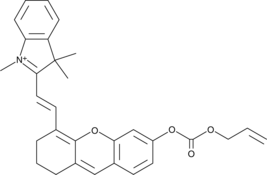
-
GC18179
CCVJ
CCVJ ist ein fluoreszierender molekularer Rotor.
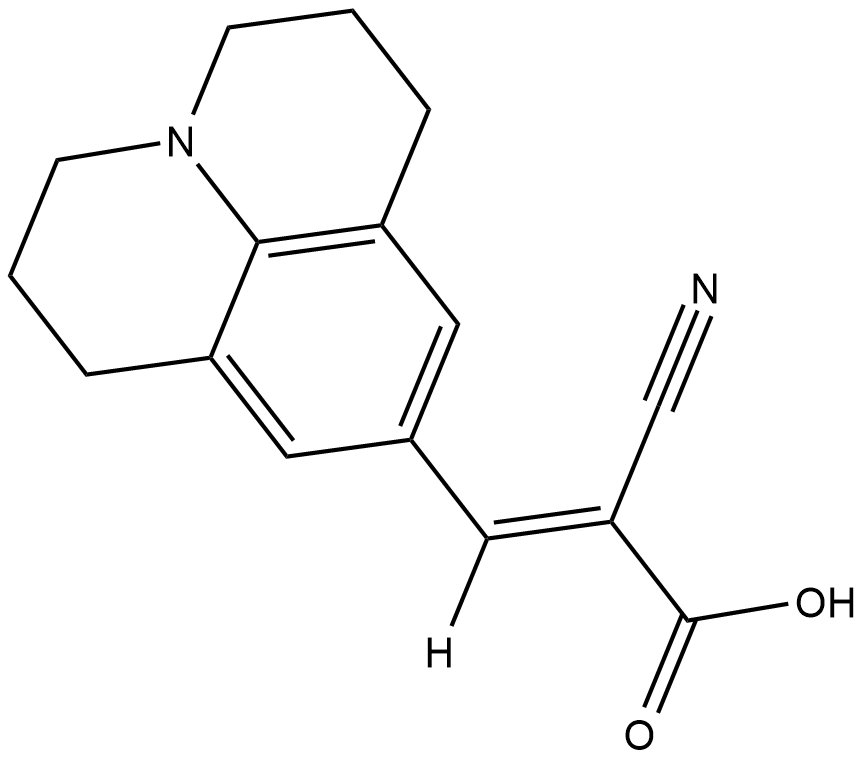
-
GC47071
CENTA
A colorimetric β-lactamase substrate

-
GC47080
Chlorophenol Red β-D-Galactopyranoside
Chlorphenolrot β-D-Galactopyranosid ist ein langwelliger Farbstoff, der fÜr kolorimetrische Assays weit verbreitet ist.
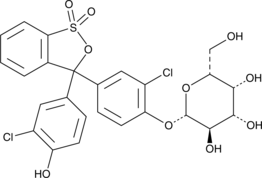
-
GC64750
Cibacron Blue 3G-A
Cibacron Blue 3G-A ist ein Anthrachinonfarbstoff, der die R46 β-Lactamase mit einem Ki-Wert von 1,2 μM hemmt.
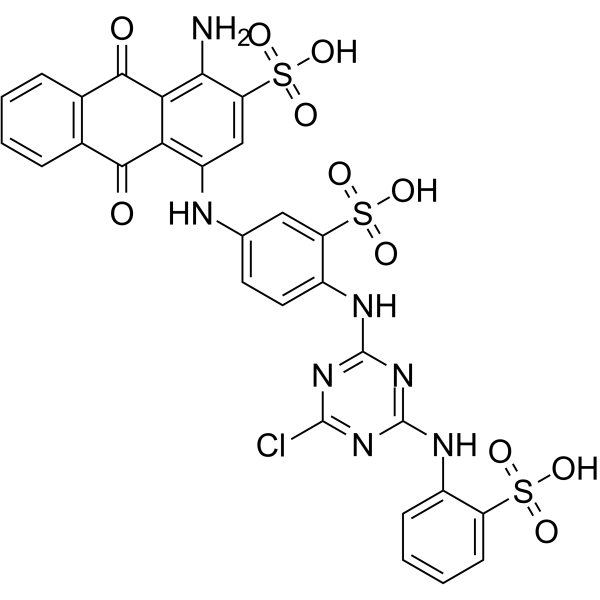
-
GC43275
Citrulline-specific Probe-Rhodamine
Protein arginine deiminases (PADs) catalyze the posttranslational modification of arginine residues on proteins to form citrulline, which plays a large role in regulating gene expression.
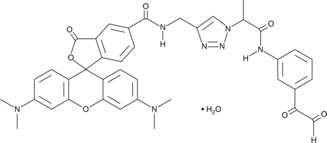
-
GC49688
Cochineal
Cochineal ist ein natÜrlicher roter Farbstoff, der zur Familie der Coccide-Farbstoffe gehÖrt.
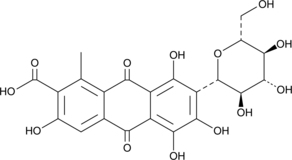
-
GC43290
Coelenterazine 400a
Coelenterazin 400a (Bisdeoxycoelenterazin), ein Derivat von Coelenterazin, ist ein Renilla-Luciferase (RLuc)-Substrat.
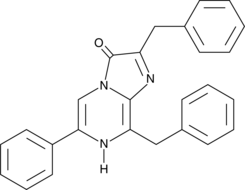
-
GC49345
Coelenterazine hcp
Coelenterazin hcp ist ein Coelenterazin-Analogon.
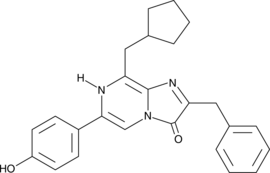
-
GC43309
Coomassie Blue R-250
Brilliant Blue R250 (Brillant Blue R), ein anionischer Farbstoff, ist der beliebteste Farbstoff zum Nachweis von Proteinen, die in SDS-PAGE-Gelen aufgelÖst wurden.
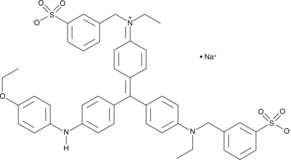
-
GC62903
Coppersensor 1
Kupfersensor-1 (CS1) ist ein membrandurchlÄssiger Fluoreszenzfarbstoff
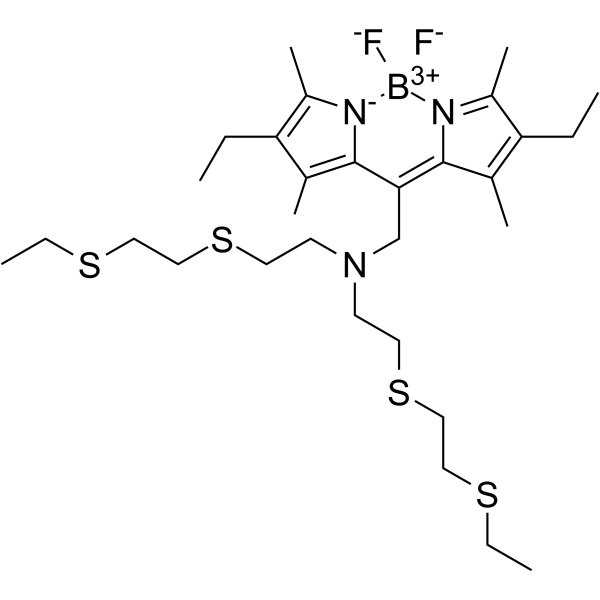
-
GC40950
Coumarin hydrazine
Cumarinhydrazin ist eine fluoreszierende chemische Sonde (Λex=420-450/Λem=468nm) zur Markierung von zellulÄren protein- und lipidgebundenen Carbonylen.
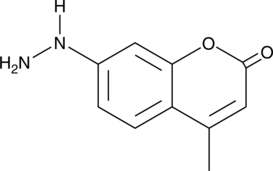
-
GC17364
Coumarin Thioester
N-terminal protein fluorescent labeling
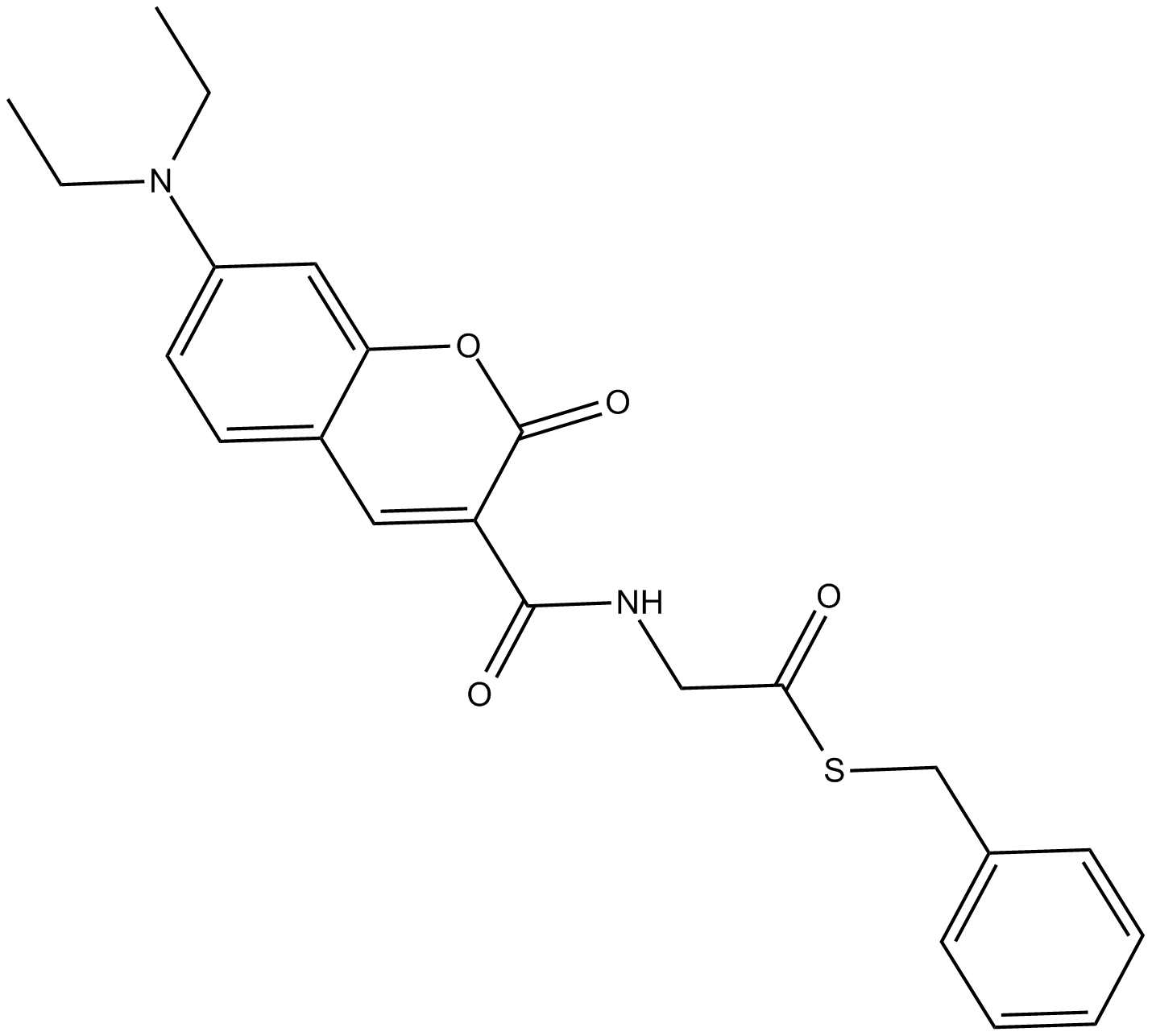
-
GC47123
Coumarin-Quinone Conjugate
A fluorescent substrate for NADH:ubiquinone oxidoreductases
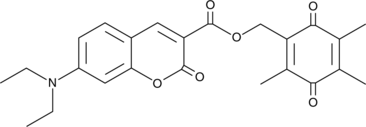
-
GC43318
coumarin-SAHA
Coumarin-SAHA ist eine Fluoreszenzsonde zur Bestimmung der BindungsaffinitÄten (kd) und der Dissoziationsraten (koff) der HDAC8-Inhibitor-Komplexe.

-
GC43322
CRANAD 28
CRANAD 28 ist eine robuste fluoreszierende Verbindung zur Visualisierung von Amyloid-Beta-Plaques.

-
GC15113
Cy3 alkyne (non-sulfonated)
used for Click chemistry to label any molecule bearing azide group.
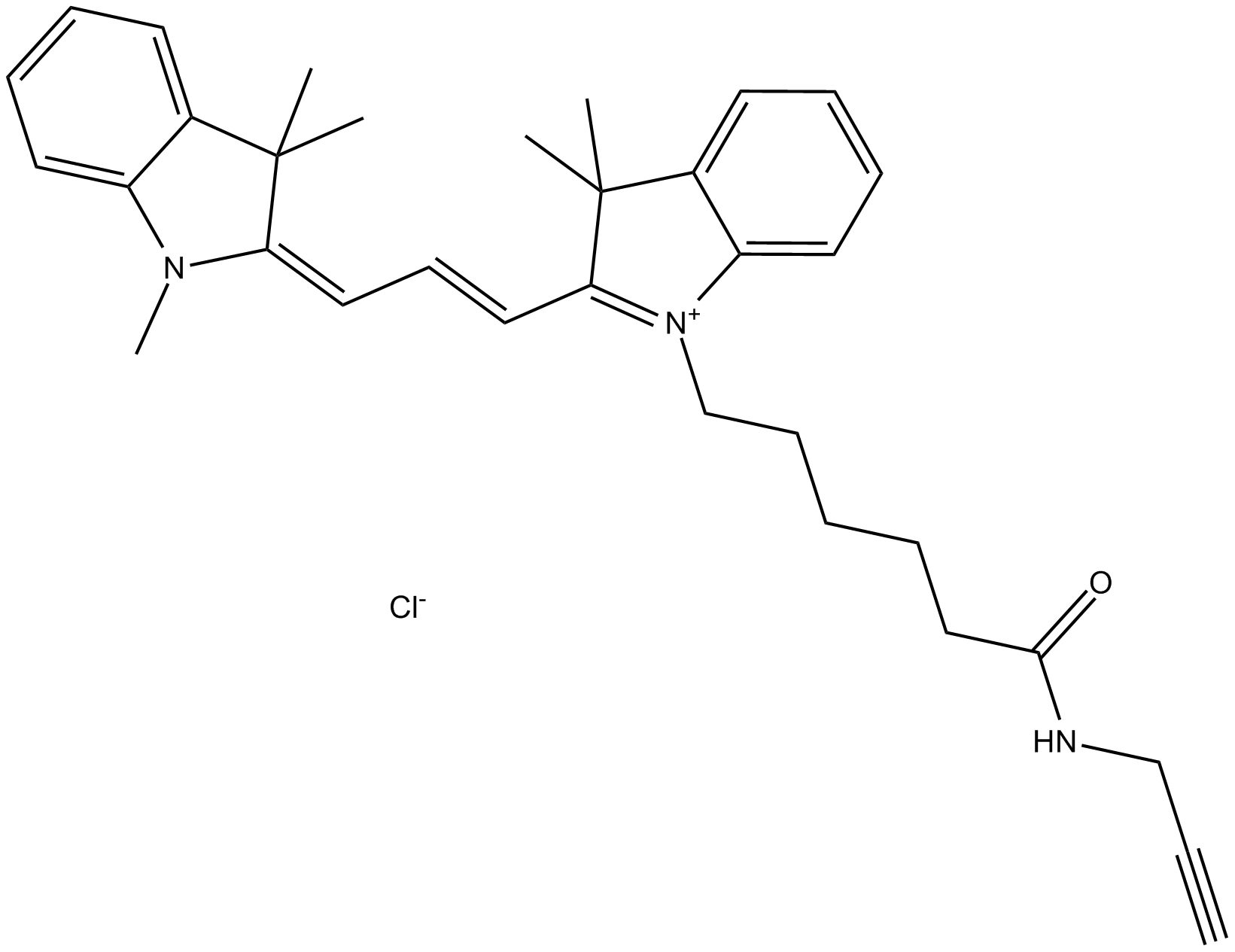
-
GC14171
Cy3 azide
used for Click chemistry to label alkyne-modified oligonucleotides
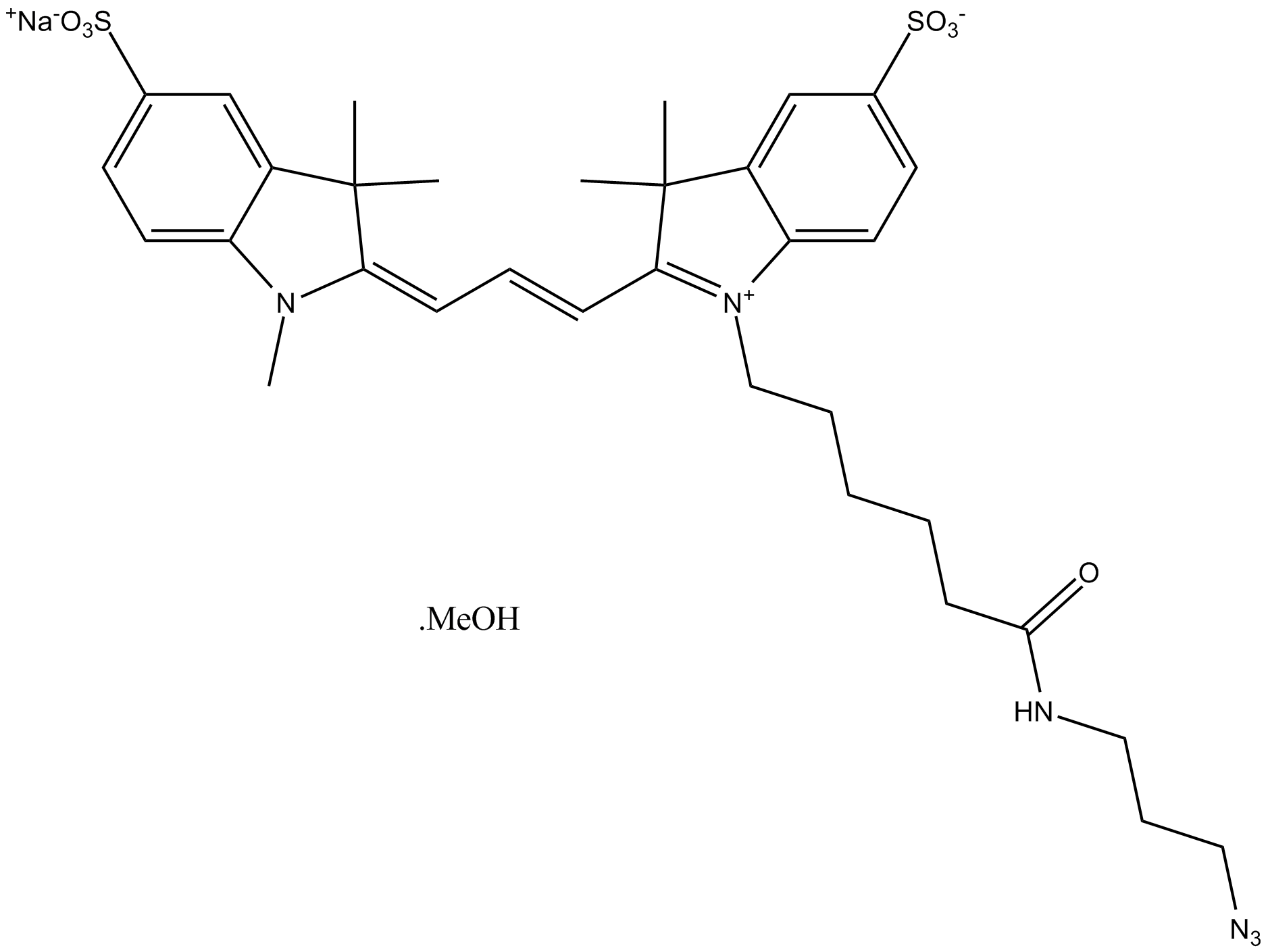
-
GC17605
Cy3 azide (non-sulfonated)
used for Click chemistry to label alkyne-modified oligonucleotides
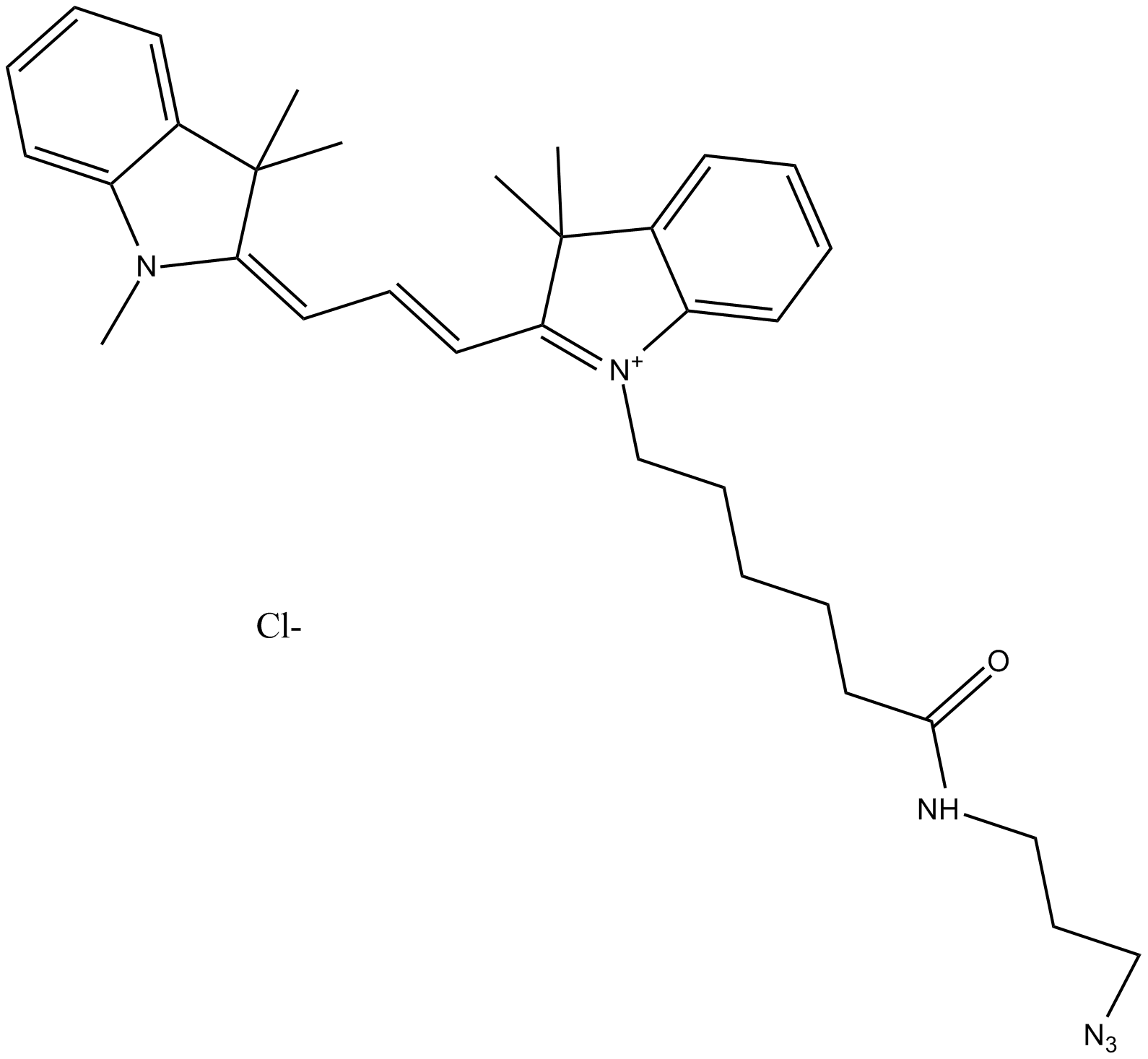
-
GC19616
Cy3 Bis carboxylic acid
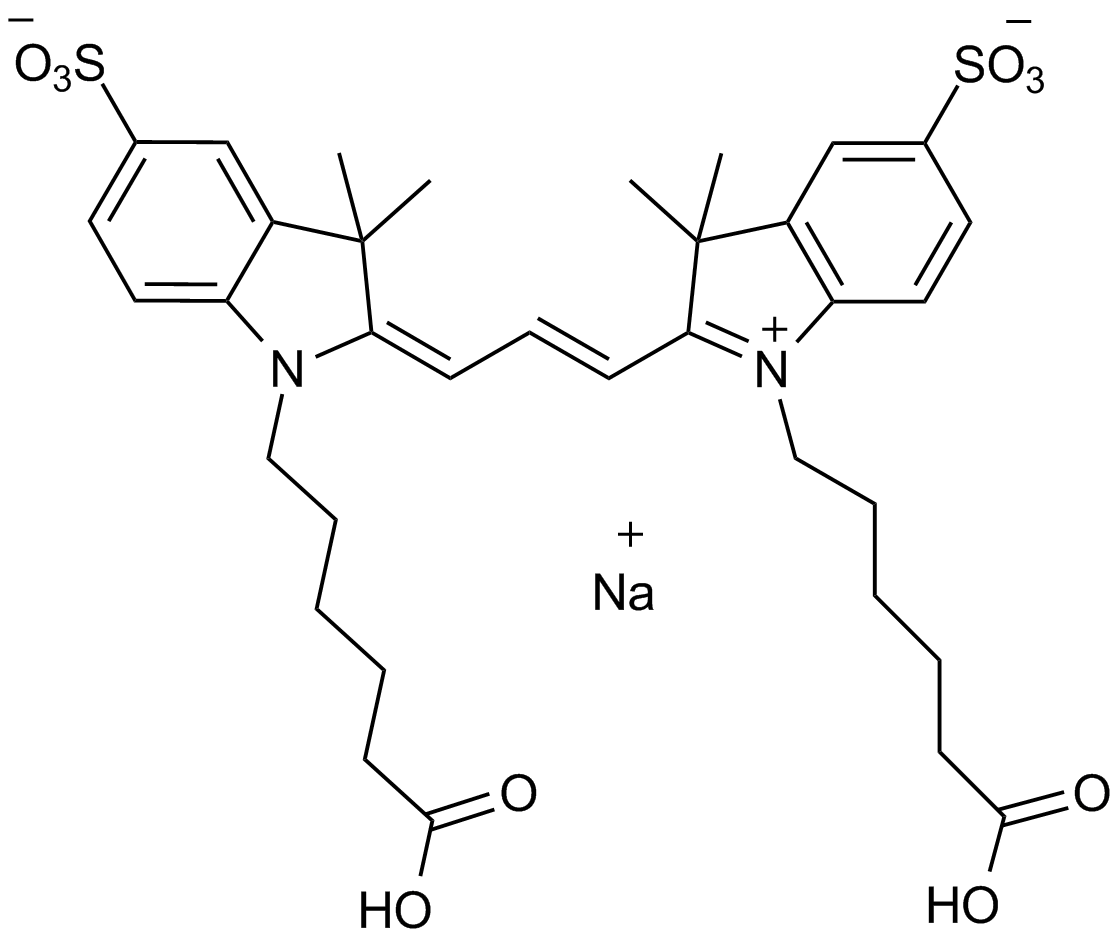
-
GC19614
Cy3 Bis NHS ester
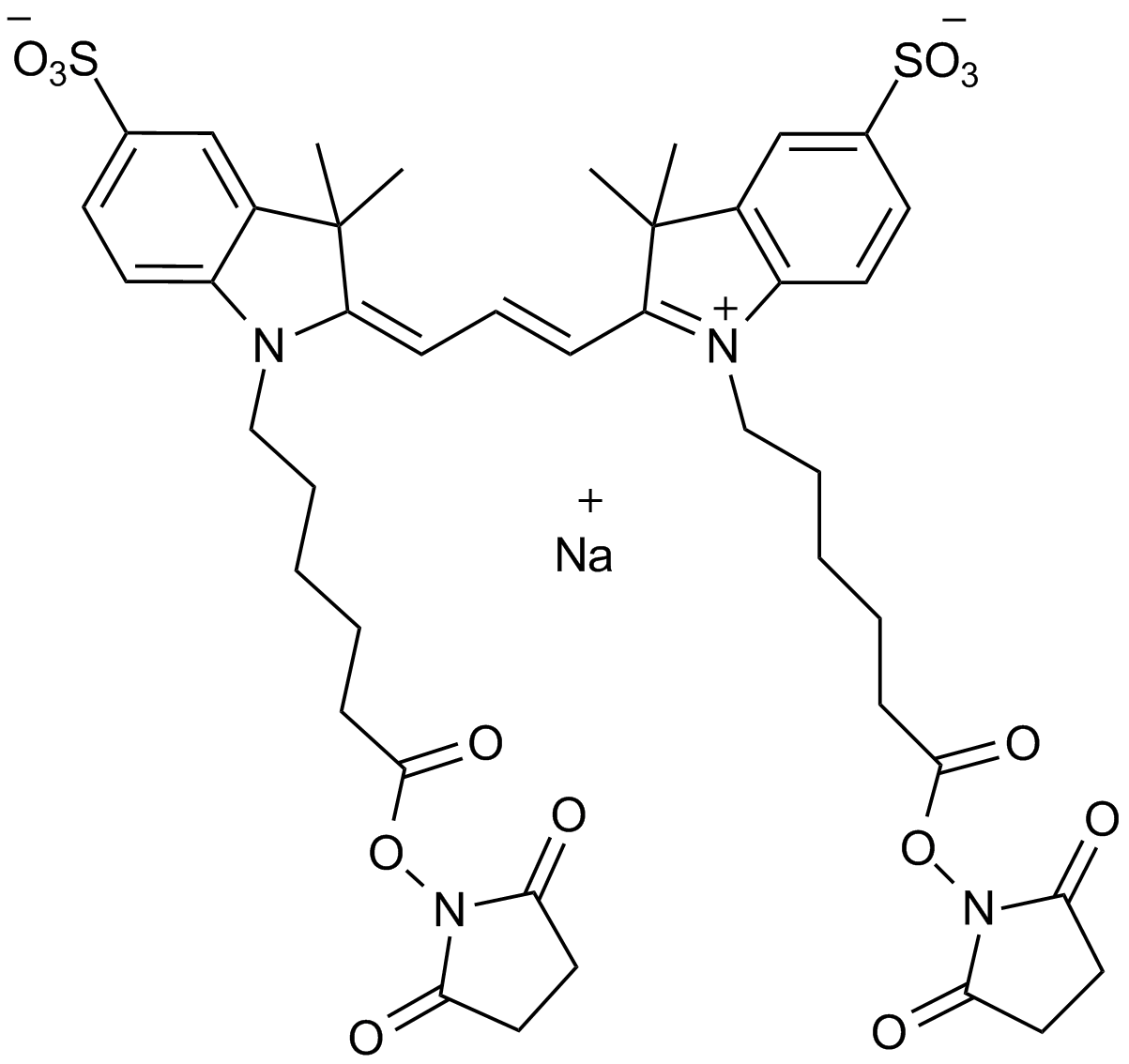
-
GC17551
Cy3 carboxylic acid (non-sulfonated)
Non-reactive fluorophore, for control experiments, and for calibration
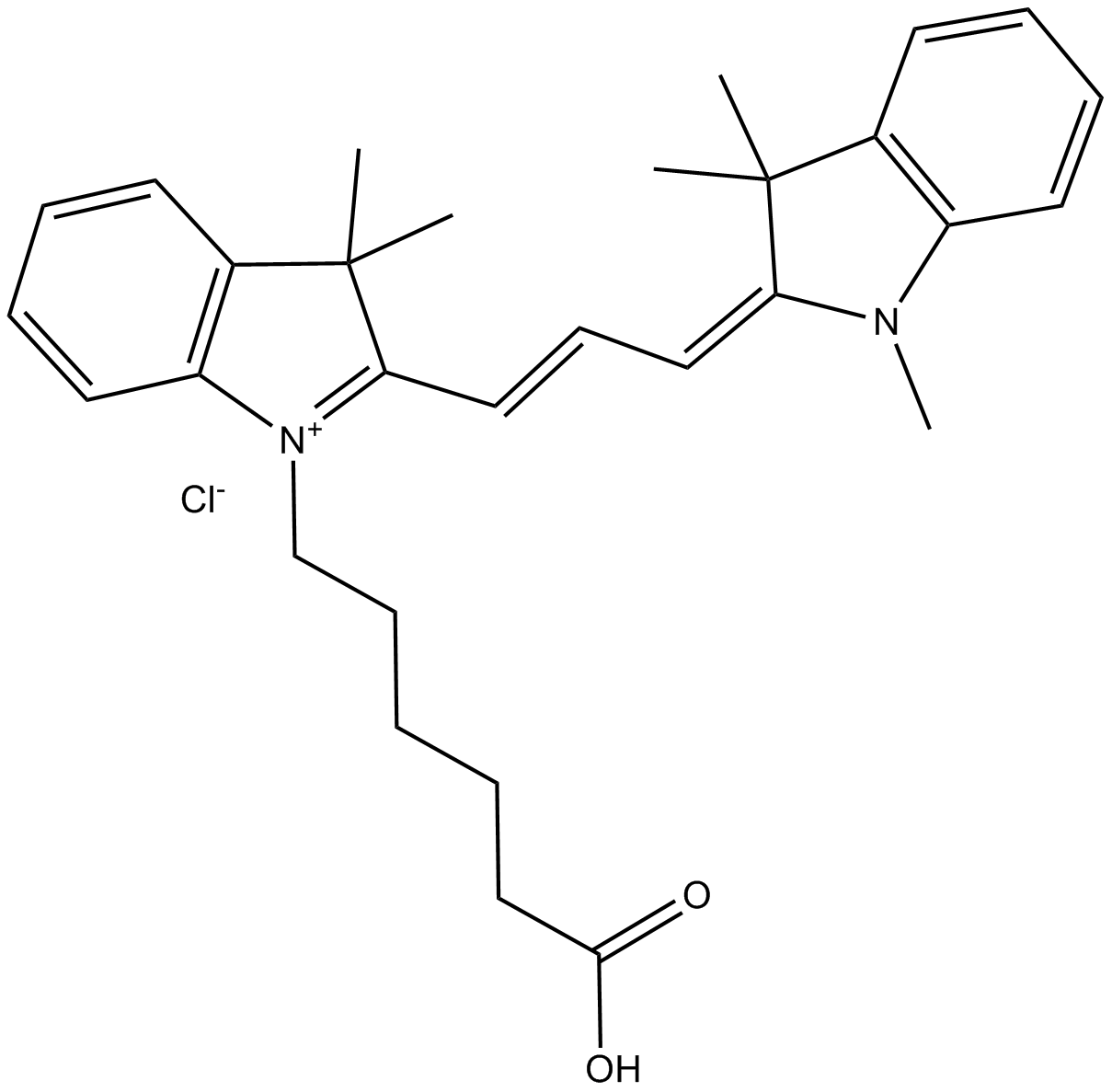
-
GC19618
Cy3 carboxylic acid(Et)
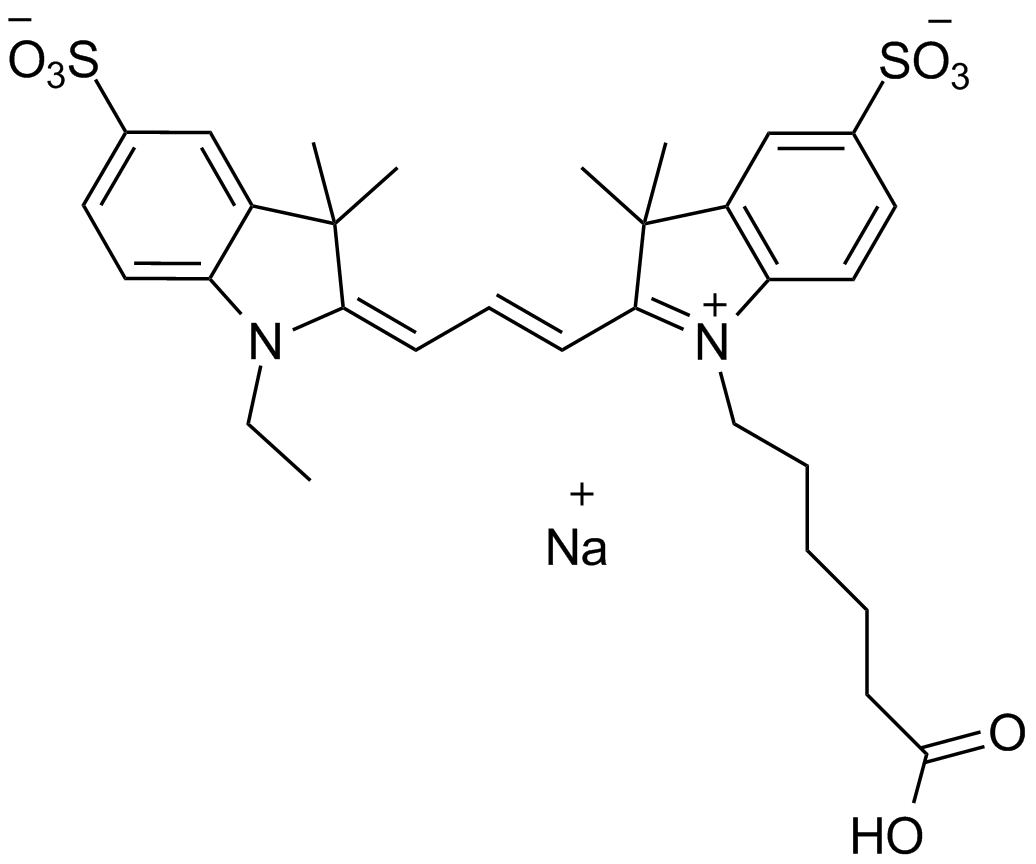
-
GC11356
Cy3 hydrazide (non-sulfonated)
carbonyl-reactive dye
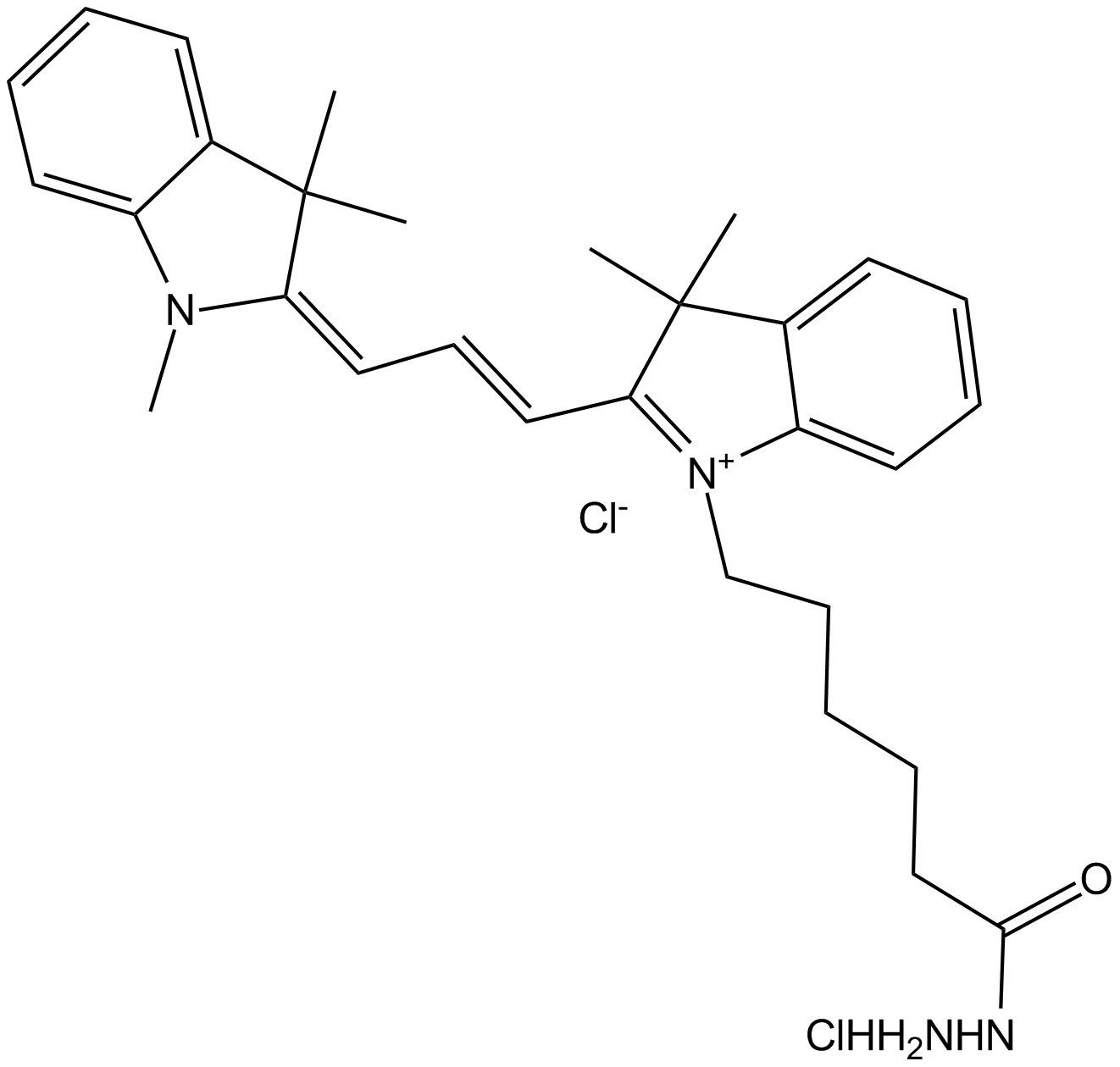
-
GC17345
Cy3 NHS ester
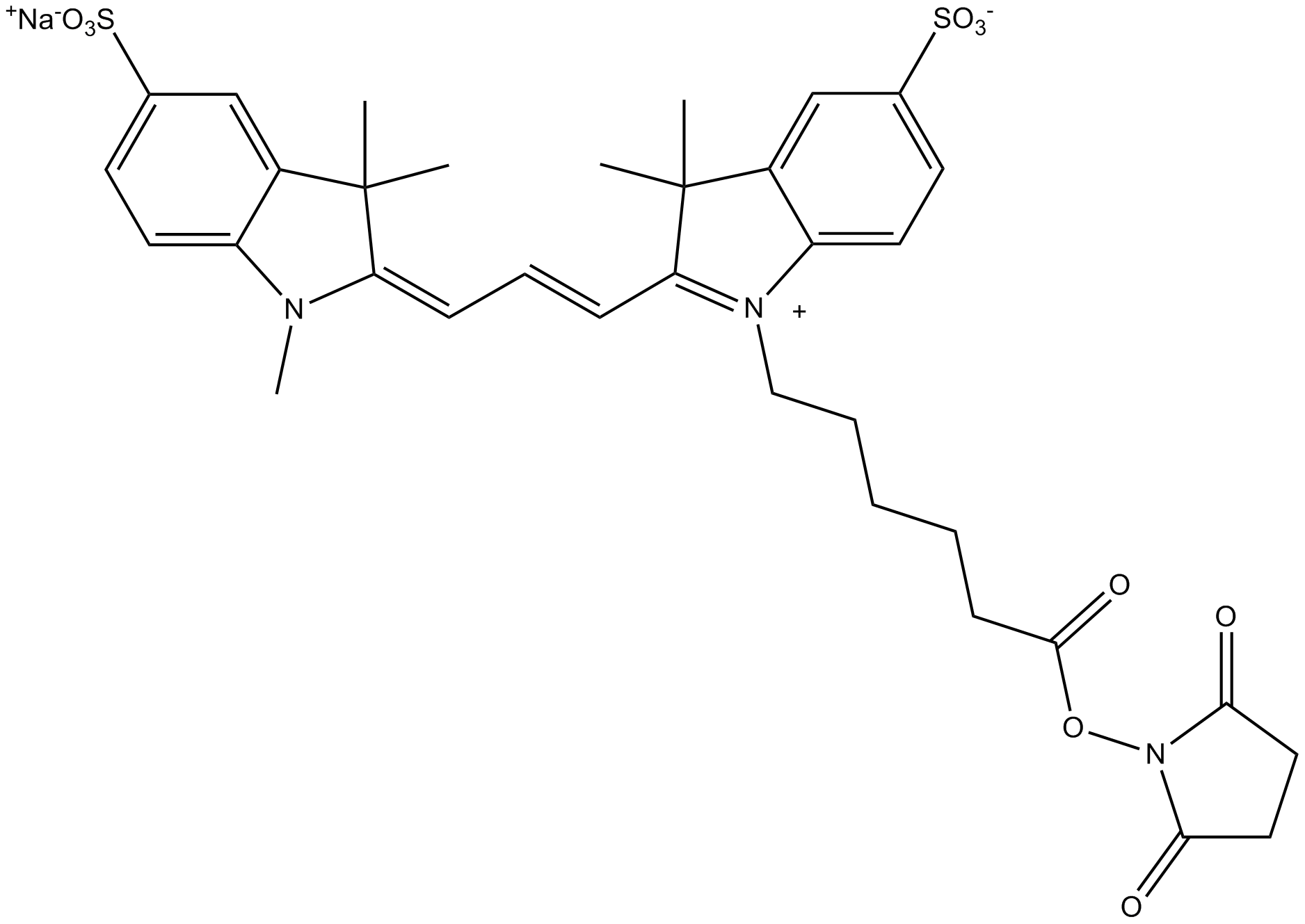
-
GC12618
Cy3 NHS ester (non-sulfonated)
Protokoll zur Vorbereitung und Reinigung von Cyanin3-NHS-Ester-Protein (pro-FD): Getrocknete Farbstoffe (Cyanin3-NHS-Ester) wurden in anhydrousem DMF auf 1 mg/ml gelöst und in Aliquots eingefroren.
